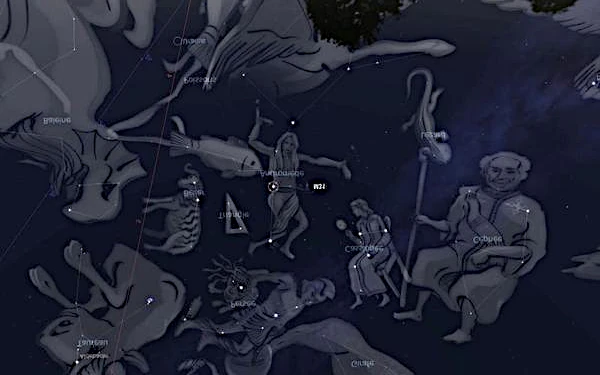
Image: Constellation of Andromeda. Image reworked from Open Source Stellarium software.
Welcome to the fascinating world of astronomy! Today we are going to talk about the Andromeda constellation, a famous constellation in the northern hemisphere.
In Greek mythology, Andromeda was a very beautiful princess who was abducted by a sea monster called the Kraken. Fortunately, the hero Perseus came to save her and they fell in love with each other. The constellation of Andromeda is represented by the figure of Princess Andromeda, attached to chains as if about to be devoured by the Kraken.
The Andromeda constellation is easy to spot in the night sky when looking to the northeast. It is located right next to the constellation Cassiopeia, which looks like a W. Andromeda is made up of several bright stars, the brightest being Alpha Andromedae, also called Alpheratz.
But the Andromeda constellation is most famous for a galaxy located within its borders: the Andromeda galaxy. This galaxy is the closest spiral galaxy to our own Milky Way, about 2.5 million light-years away. It is also one of the largest known galaxies, with a size of about 220,000 light-years.
The Andromeda Galaxy is a fascinating object to observe with a telescope, as it contains billions of stars and many interesting objects such as star clusters, nebulae and star forming regions. Also, the Andromeda galaxy is colliding with our own galaxy, the Milky Way, which means that in millions of years they will merge to form a new giant galaxy.
By exploring the constellation of Andromeda and the galaxy it contains, you can learn more about the universe and discover all the wonders it has to offer. So the next time you look up at the night sky, try to spot the constellation Andromeda and think of the beautiful Princess Andromeda and the galaxy that bears her name.
Who knows, maybe you could find your own hero or heroine in the stars of the night sky!